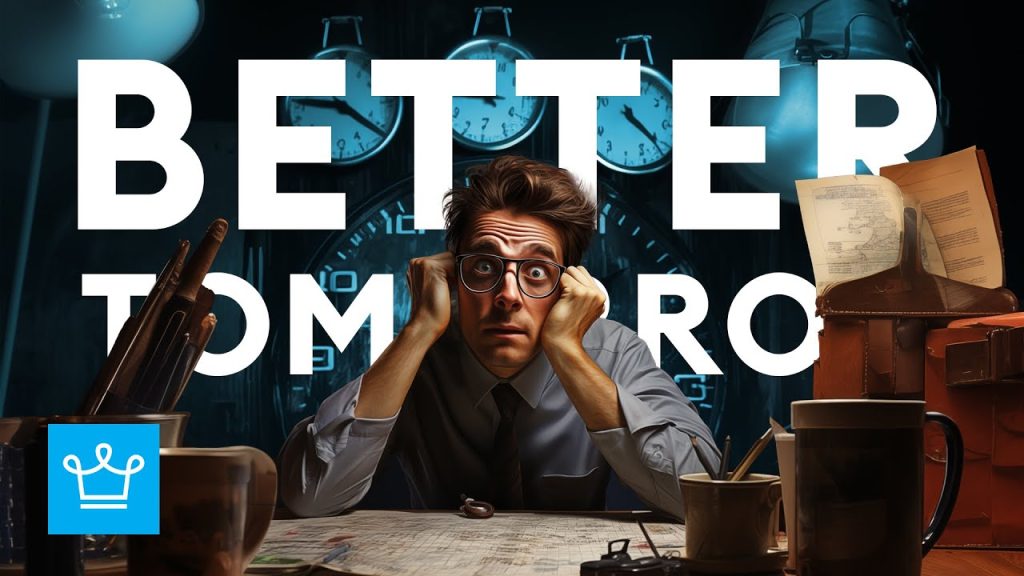Silicon Valley Bank Run – How the FED killed our BANK
So, our bank – Silicon Valley Bank – just went bankrupt last Friday.
But, it’s not just us. In fact, most tech start-ups in Silicon Valley and over 2500 venture capital firms held their funds with the 16th largest bank in the United States.
Of course, we are talking about the Silicon Valley Bank run, the second-largest bank failure in United States history. If you think your money is resting safely in your bank account, think again.
After reading this article, you will never look at banks the same way ever again!
If you don’t feel like reading, you can watch the video version on YouTube. Now let’s dive in.
Firstly, let’s understand how Banks actually work
Before we dive into what actually happened with Silicon Valley Bank let’s briefly explain how banks actually work.
In simple terms, banks are financial institutions that help people save, borrow, and spend money. When you put your money in a bank account, the bank uses it to make loans to other people or businesses or directly invests it in securities to make a profit.
A bank is after all a business, not a charitable organization.
For example, let’s say you deposit $100 in a bank.
The bank will lend $80 of that money to someone who wants to buy a car while keeping $20 in reserve for safety. The person who borrows the money pays interest. This is how the bank makes money.
This brings us to the concept of fractional reserve banking
Fractional reserve banking is a system in which banks keep only a fraction of their deposits in reserve and use the rest to make loans.
In the example above, the bank kept $20 in reserve and lent out $80. This means that the bank had a reserve ratio of 20%. The reserve ratio is typically between 3% and 10%, and the government sets it.
What this means is that banks can create money out of thin air by making loans, as long as they keep enough reserves on hand to meet the reserve requirement. As expected, Silicon Valley Bank did exactly that.
These loans are actually considered assets and are nothing more than just some numbers on a screen that the bank edits according to its will.
For example, if a bank has $100 in deposits and a reserve requirement of 10%, it must keep $10 in reserve and can lend out $90.
Fractional reserve banking allows banks to create more money than they actually have in reserves.
This can help stimulate the economy by making more money available for people to borrow and spend. Let’s use an example here.
Let’s say Alice and Bob each go and deposit $1000 in the bank. The bank keeps $200 and does whatever it wants with the other $1800.
But what happens if both of them have a change of heart? What if they have an unforeseen payment that needs to be made, and they both need to withdraw those $1000?
”No problem”, the banker says. “We have enough money to give to you.” Alice and Bob are not the only customers of the bank after all.
But what if all of them want to withdraw at once? Then, the bank gets into some real trouble.
To lessen this risk, most governments have systems in place, like the FDIC in the United States, that insure bank deposits up to a certain amount. You can see where we are going with this. Now, in normal economic conditions, this system works great.
The economy is booming, money is cheap, investments are reliable economic instruments, and everybody is thriving. Therefore, no reason for Silicon Valley Bank to be cautious.
But, what happens when certain events, like wars, pandemics, and supply chain issues slow down the economy and the production of goods and services? You get high inflation, and high inflation is primarily tamed by the central bank with rate hikes.
The primary goal of a rate hike is to control inflation and promote economic stability by increasing interest rates on the money they are borrowing.
When interest rates go up, borrowing becomes more expensive, which leads to a decrease in consumer and business spending. This, in turn, helps slow down inflation and prevent the economy from overheating.
But there is a price to pay for everything.
Fractional reserve banking does not work in an extended rate-hike environment.
Pay attention now, because this is probably the most important piece of the puzzle.
As mentioned earlier, when a bank takes deposits from its customers, it invests that money in various assets, such as loans, bonds, and other financial instruments. The bank earns interest on these assets, which is how it generates profits.
But, interest rates and bond values are inversely correlated! Allow us to explain:
First, let’s define what interest rates and bond values are. Interest rates are the percentage rates that lenders charge borrowers for the use of their money.
For example, if you borrow $100 and the interest rate is 5%, you will need to pay back $105. Bond values, on the other hand, are the prices of bonds that are traded on the bond market.
Bonds are essentially loans that investors make to governments or corporations in exchange for regular interest payments.
Now, imagine you are an investor who wants to buy a bond that pays a fixed interest rate of 5%. If interest rates in the economy rise to 6%, new bonds will be issued with a 6% interest rate. Obviously, these become more attractive to investors than your 5% bond.
This means that if you were to sell your 5% bond on the market, you would have to lower its price in order to make it more attractive to potential buyers. This is because buyers are able to get a better return on their investment by buying the new 6% bonds rather than your 5% bond.
Conversely, if interest rates were to fall to 4%, your 5% bond becomes more attractive to potential buyers, as it offers a higher return than the new 4% bonds.
This means that you could sell your bond for a higher price since buyers would be willing to pay more for the higher return on investment (ROI). But how is this relevant to the Silicon Valley Bank case, you may wonder.
So, TLDR if a bank buys bonds in a 0% interest rate environment, if the FED starts to rapidly increase interest rates, they are going to lose money.
Now, banks can hide the dirt under the rug by designating the securities as “held to maturity” where mark-to-market losses would not flow through the income statement. But that can only hide things for so long.
If the maturity of the assets is longer than the maturity of the liabilities (deposits), it creates an asset maturity mismatch.
What this means is that the bank has made long-term investments with short-term deposits from the clients.
In other words, it has promised to pay back its depositors in the short term, but it has invested its money in long-term assets. Assets it may not be able to liquidate quickly.
If a large number of customers suddenly decide to withdraw their deposits, the bank may not have enough cash on hand to meet these obligations, leading to a liquidity crisis.
This can trigger a BANK RUN
In the book ”What Has Government Done to Our Money?” author Murray Rothbard reminded us:
“The bank creates new money out of thin air, and does not, like everyone else, have to acquire money by producing and selling its services. In short, the bank is already and at all times bankrupt; but its bankruptcy is only revealed when customers get suspicious and precipitate “bank runs.”
When a lot of people decide to take their money out of a bank at the same time, this is called a “bank run.” Most of the time, this is because people think the bank is having money problems. This sudden rise in withdrawals can cause a liquidity crisis, in which the bank doesn’t have enough cash to pay back its customers.
In the early stages of a bank run, customers start to panic and withdraw their deposits. This forces the bank to sell its assets at a loss.
This, in turn, hurts the bank’s capital and makes people worry about its financial stability. Consequently, this leads to even more people taking money out of the bank.
If you’ve paid attention so far, you can see how all the pieces of the puzzle connect to each other. So, to put all of this together, in order for a bank run to occur 3 things need to happen:
- An asset maturity mismatch
- A decline in the value of those assets
- Early withdrawals
And Silicon Valley Bank checked all the boxes! In fact, SVB held more than 50% of its assets in treasuries and agencies.
Here’s the problem: all of them were long-term investments. During the pandemic, SVB was very well-positioned to take in cash deposits for its customers.
These funds came from a mix of PPP loans. They were given to businesses as part of a program to help them deal with the pandemic, equity investments in VC, and cash. As any bank in the world would do, SVB quickly put these funds into things that would make money.
Since the yields on the front end were only 25 bps, the management team wanted to make a little more money, so they turned to longer-term bonds, which had yields just above 1%.
All fun and games, but by the end of 2021, the bubble in the tech sector had already popped. The pace of deposit growth had slowed significantly, as seen in this graph.
In early March 2022, the FED announced the first of the many rate hikes that were to come.
At this point in time, SVB starts losing money on its investments. Soon, they’re faced with a choice: Hedge or designate the securities as “held to maturity” where mark-to-market losses would not flow through the income statement.
They chose the latter, which was the critical decision that ultimately led to this bank run.
By making this decision, the bank literally trapped itself into playing the long-term game, trusting that the FED will not do any further rate hikes.
Lo and behold, the FED keeps raising interest rates. And SVB’s $21 billion bond portfolio, which was yielding an average of 1.79%, got rug pulled by the current 10-year treasury yield, which is about 3.9%. This required drastic measures, but the damage was already done.
Rumors started to quickly spread among the clients, and people started withdrawing funds in silence.
On Wednesday, SVB announced the sale of securities at a loss to give back its clients’ money. Moreover, it would also sell $2.25 billion in new shares to shore up its balance sheet.
That triggered panic among key venture capital firms, which reportedly advised companies to withdraw their money from the bank.
An insane $42 billion in deposits flowed out of SVB in two days, roughly 25% of total deposits. There is no bank that can survive this.
The bank’s stock began plummeting Thursday morning. And by the afternoon, it was dragging other bank shares down with it as investors began to fear a repeat of the 2007-2008 financial crisis.
By Friday morning, trading in SVB shares had been halted. They abandoned any efforts to quickly raise capital or find a buyer.
California regulators stepped in and shut down the bank. It went under the care of the Federal Deposit Insurance Corporation as a receivership.
The aftermath: The FED steps in
On Sunday, the Department of the Treasury, the FED, and the FDIC issued a joint statement. They announced that they are taking decisive actions to protect the U.S. economy by strengthening public confidence in the banking system.
TL;DR, They decided that they are going to step in and save the day, confirming that customers are going to be able to withdraw their funds on Monday.
This is not an actual bailout for the bank. But rather it is a measure to ensure that the clients get their deposits. Something to contain the contagion so it does not spread in the economy.
Rest assured, guys, Alux is safe.
On the other hand, shareholders and certain unsecured debt holders got the middle finger.
Senior management is removed, and ”any losses to the Deposit Insurance Fund to support uninsured depositors will be recovered by a special assessment on banks, as required by law.”
While many will see this as good news, this practice reveals a darker secret. We are at the mercy of these institutional organizations. And they are the ones who caused all this trouble in the first place.
With all of that being said, whether or not you decide to trust the government or the banks, that decision ultimately lies with you. We suggest you read this article at least a couple of times to make sure you fully understand the entire story.
Knowing how the current banking and economic systems work is vital. We need to preserve our wealth and protect ourselves against systemic risks. That’s why we recommend you watch this video about the 15 Things You Didn’t Know About Banking Industry.
This is how the FED killed Silicon Valley Bank. We hope you learned something today about banks, how they work, and how it is possible for a giant like SVB to fall in such a spectacular manner. See you next time!






